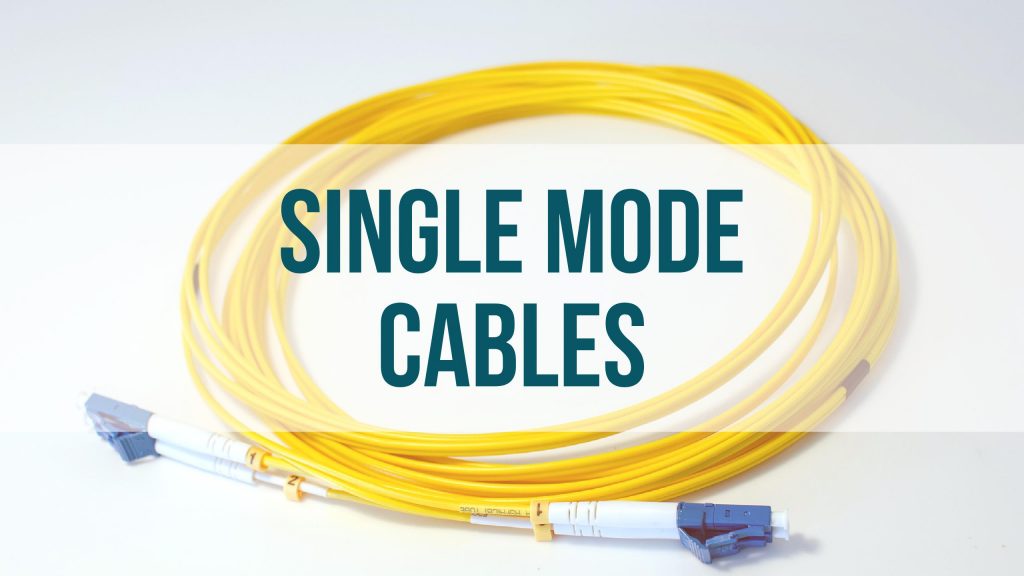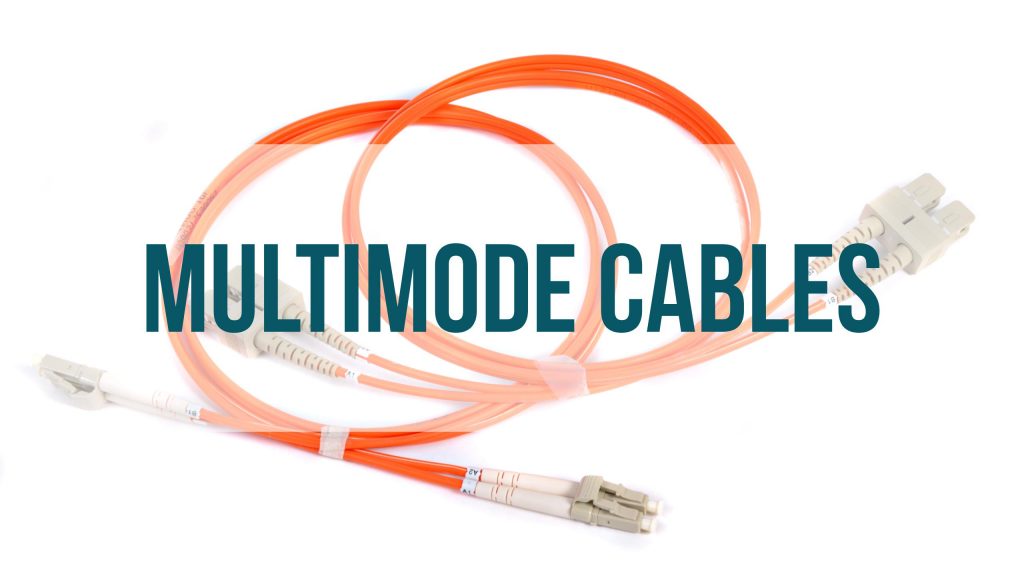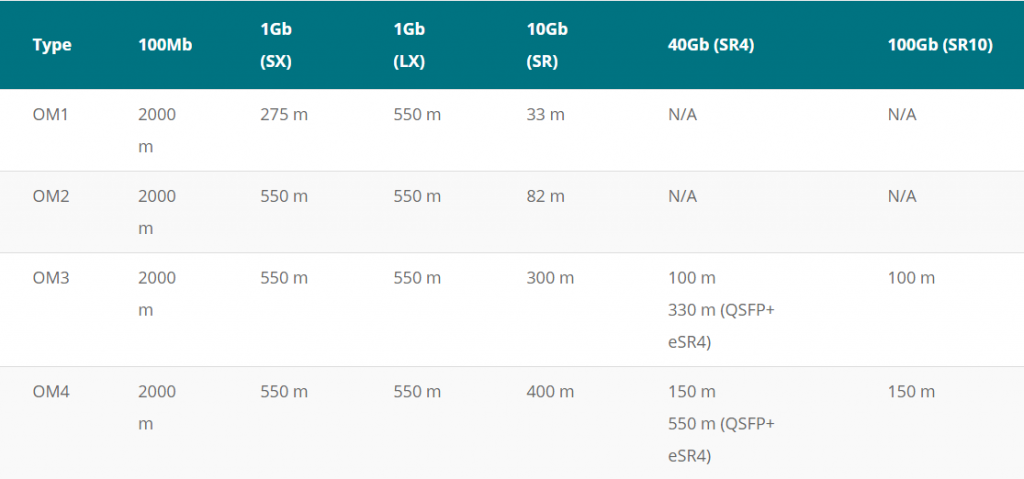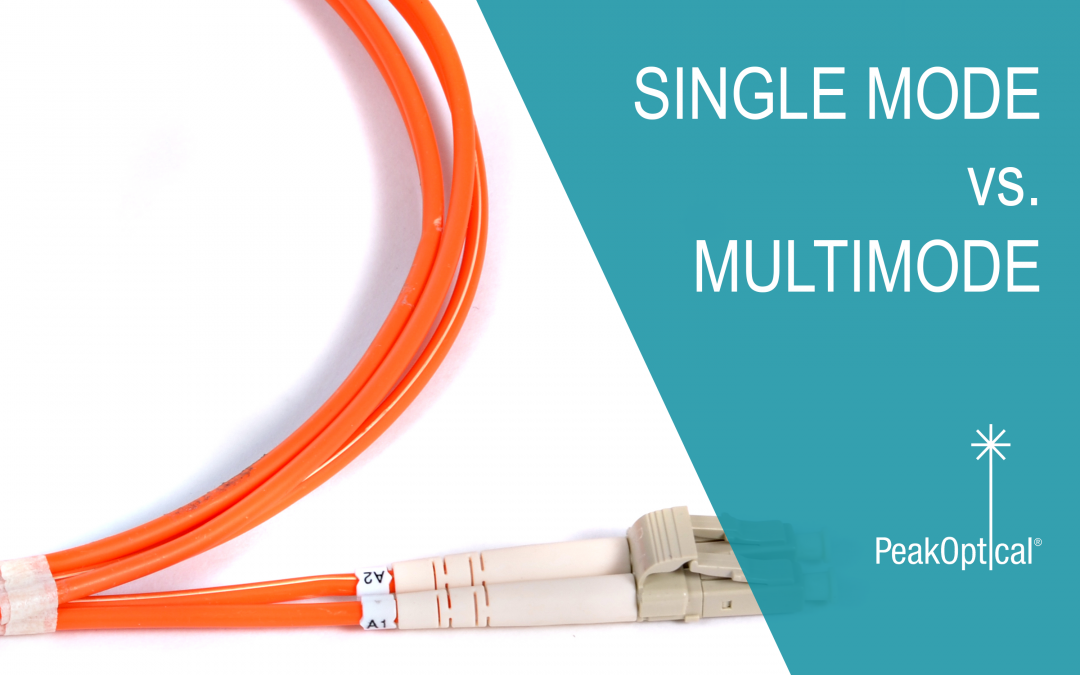Fiber optic has made it possible to transmit data around the globe in a matter of seconds. Compared to copper cable, the information is being transmitted faster and its quality is not altered.
Hair-thin strands of glass or plastic fiber are used to send light signals. The light travels to the core, the center of the fiber optic. The core it is surrounded by the cladding, an optical material that traps in the core, using the “total internal reflection” technique. A primary buffer coating protects the fiber from moisture or other damage. The level of protection is strengthened by the cable, which holds the fiber and the strength members inside and it is covered by a jacket.
There are two types of cables that are commonly used: Single mode and Multimode.
What is the difference between multimode and single mode fiber optic cables?
Single mode

Single mode cables are designed to carry light directly down the fiber. It is a single strand of glass fiber and has a diameter of 8.5-10 microns. Because it has one mode of transmission, it will propagate 1310 or 1550 nm.
Compared to the multimode fiber, the single mode patch cords carry a higher bandwidth, but it requires a light source with a narrow spectral width. The single mode gives a higher transmission and up to 50 times more distance than the multimode. The core from a single mode cable is smaller than one from a multimode.
Single mode is a vital part of broadband networks. It designed to transmit data over long distances, thus making it perfect for cable television networks or college campuses.
PeakOptical specializes in OS1 Single mode cables. They come in handy in indoors situations, where the distance is maximum 2000 meters and allow 1 up to 10 Gigabit Ethernet.
Multimode

Multimode patch cords have a bigger diameter, typically 50-100 microns for the light carry component. Over medium distances, multimode fibers give high bandwidths at high speeds. Light waves are dispersed into numerous paths, or modes, as they travel through the cable’s core typically 850 or 1300nm.
In cable runs longer than 914,4 meters, the multiple cable pats can cause distortion at the receiving end, resulting in an unclear and partial data transmission.
Multimode cables are considered to be the “domestic” fiber as they are used for local-area network, as an example, they can be used in FTTH. Multimode can reach up to 100Gbps Ethernet.
PeakOptical Multimode fiber portfolio includes OM1, OM2, OM3, and OM4

PeakOptical manufactures indoor and outdoor fiber optical cables and patch cords. Our cables are available with all commonly used terminations and in all lengths regardless of order quantity.
Our portfolio furthermore includes a wide range of spare connectors, adapters, pigtails, and attenuators.
PeakOptical patch cords offer an easy and cost-effective way to establish your necessary connections. Please contact us to request cable types or connector combinations.


